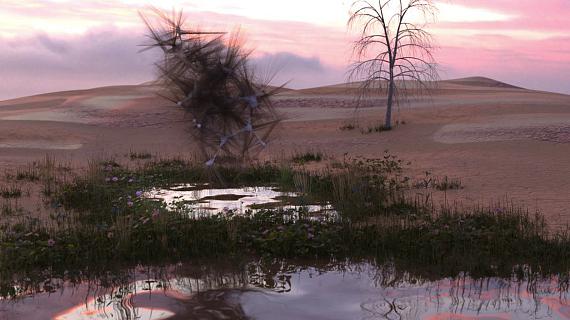
Yellow Prince That Casted Long Shadows, 2023 (ongoing)
Video installation. 7 min
Seen By #19: Hyperstition
Arwina Afsharnejad and Daria Kozlova » Felix Ansmann and Kani Lent » Moritz Haase » Sophia Hallmann » Bailey Keogh » Victoria Martínez » Anna-Maria Podlacha » Marie Salcedo Horn » Lilith Tyrell (KSE) »
Exhibition: 6 May – 18 Jun 2023
Thu 1 Jun
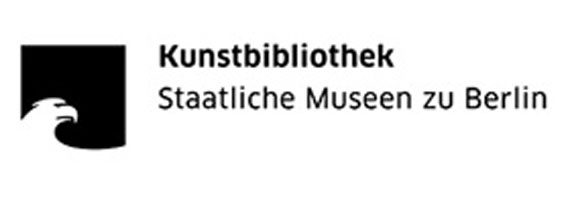
Museum für Fotografie
Jebensstr. 2
10623 Berlin
+49 (0)30-266424242
mf@smb.spk-berlin.de
www.smb.museum/mf
Tue-Sun 11-19, Thu 11-20
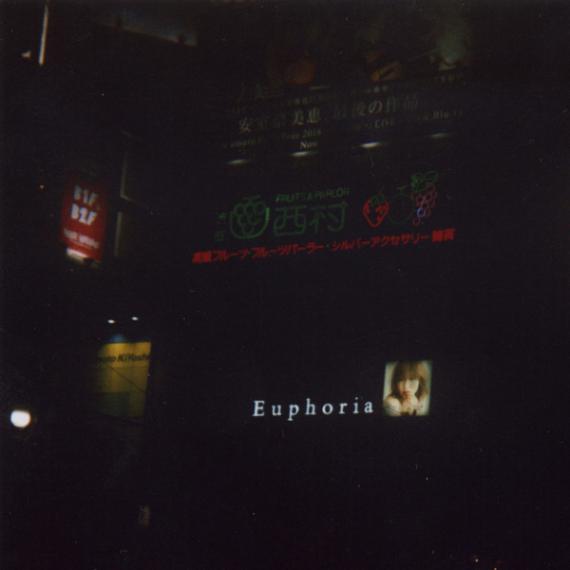
Tannhäuser Gate: C-Beams Glittering in the Dark, 2021
Series of 4 photographs, inkjet print
Courtesy the artist and Koob Sassen Enterprises, London
SEEN BY #19: Hyperstition
A project by and with Arwina Afsharnejad & Daria Kozlova, Felix Ansmann & Kani Lent, Moritz Haase, Sophia Hallmann, Marie Salcedo Horn, Bailey Keogh, Victoria Martínez, Anna-Maria Podlacha und Lilith Tyrell (KSE). Curated by Marlena von Wedel.
Exhibition: 6 May – 18 June 2023
A special presentation of the Kunstbibliothek - Staatliche Museen zu Berlin in cooperation with the Universität der Künste Berlin
The exhibition explores the experimental philosophical concept of hyperstition and makes it the starting point for new artistic works by young artists on speculative themes in photography and video.
Hyperstition refers to ideas whose expression releases such vibrations that they ultimately realise themselves, similar to a self-fulfilling prophecy. The term was first coined in the 1990s by the interdisciplinary collective Cybernetic Culture Research Unit (CCRU) in the UK, whose members published their findings mainly on blogs on the internet. Hyperstition is a neologism made up of the English words 'hyper' and 'superstition'. Unlike superstition - a fiction that remains fictitious - hyperstition is a fiction that makes itself real. An example of hyperstition is virtual economic speculation, which has become a reality-constituting force in capitalism.
We live in a complex system of feedback cycles: power supply systems, logistics chains, financial markets, neo-extractivist expansion... Confronted with governance models that are unable to initiate the necessary systemic change, younger generations often find thinking about the future difficult and paralysing. This exhibition is inspired by the idea that imagining the future fictitiously offers a better decoding of one's present than looking at the past.
11 artists are showing 9 works, some of which were created for this exhibition project. Among other things, they deal with new and old thought games from science fiction and digitality, such as our relationship to artificial intelligence and computer simulations or, for example, the glitch as a feminist digital utopia. Online and offline, places are visited on different time levels and linked non-linearly like time capsules; imagined through dream time travel or collective artistic processes. Light plays a recurring role both in the creation of the photographic works and as a media-theoretical consideration of the relationship between photography and temporality. In terms of content, the individual works touch on common interests such as the unveiling of relationship complexes, the visualisation of algorithms, examinations of new technologies, internet, mysticism and alchemy. The works shown move between prophetic curiosity and archival interest in the contemporary. Realising that images and documentary no longer show reality, but rather something that could be, we are concerned with the relationship between propositions and things.
In the run-up to the exhibition, joint working sessions were held. The collective exhibition process began with a systemic constellation, a method from the coaching and therapy field that is suitable for visualising and dealing with conflicts in relationship systems. In addition to classic scenarios such as family, constellations can also be done on larger, abstract systems. This insight constellation work can be placed on different time levels such as past, present or future.
The exhibition was thus preceded by a hyperstitional working method: the group-therapeutic experiment served as a collective exercise and was at the same time an attempt to reflect the exhibition topic in the format. Thus, one’s own art projects as well as the entire exhibition project were mapped in the constellation, in the now as well as at a certain point in the future: on the day of the opening.
Conversations that developed from these sessions revolved around the artworks, but also around the numerous layers of meaning around the exhibition. The individual systems in which the exhibition is embedded were critically examined: We are in Berlin in a former military casino, just across the street from the Bahnhof Zoo subculture milieu. The museum is also home to the photographic work of Helmut Newton, whose art excites an international audience, but at the same time can be identified with androcentric world perspectives and patriarchal structures. The exhibition in the room next door "Flashes of Memory: Photography during the Holocaust" illuminates the darkest chapter of German history. These reflections have been incorporated into the works. An integral part of the exhibition is an open resting space, which picks up on important references and concepts as a collectively designed temporary library. It opens up possibilities for dialogue and provides a vocabulary for positioning oneself in this world.
"Seen By #18" is part of the "Seen By" exhibition series, a joint project presented at the Museum für Fotografie (Museum of Photography) and organized by the Kunstbibliothek (Art Library), Staatliche Museen zu Berlin and the Berlin University of the Arts (UdK). Its aim is to rethink curatorial and artistic strategies for working with contemporary photography.
Further information: www.smb.museum/seenby
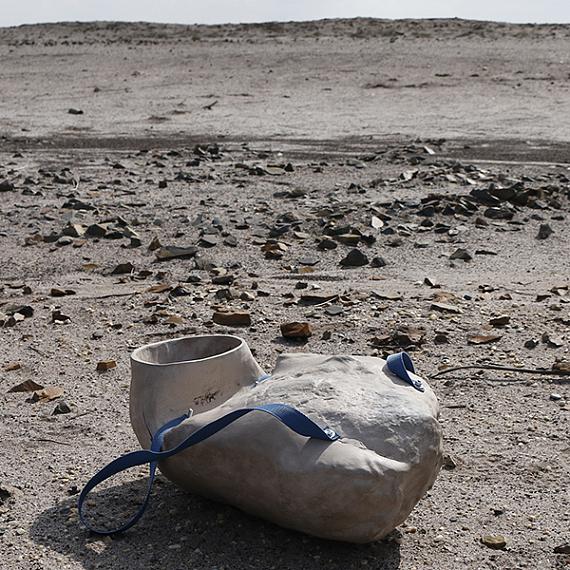
Learning from stones - walking through the post-mining landscape Grünhaus, 2023
Multimedia installation
SEEN BY #19: Hyperstition
Ein Projekt von und mit Arwina Afsharnejad & Daria Kozlova, Felix Ansmann & Kani Lent, Moritz Haase, Sophia Hallmann, Marie Salcedo Horn, Bailey Keogh, Victoria Martínez, Anna-Maria Podlacha und Lilith Tyrell (KSE). Kuratiert von Marlena von Wedel
6. Mai bis 18. Juni 2023
Eine Sonderausstellung der Kunstbibliothek – Staatliche Museen zu Berlin
Die Ausstellung untersucht den experimentellen philosophischen Begriff Hyperstition und macht ihn zum Ausgangspunkt für neue künstlerische Arbeiten junger KünstlerInnen zu spekulativen Themen in Fotografie und Video.
Hyperstition beschreibt sinngemäß Ideen, deren Ausdruck solche Schwingungen freisetzt, dass sie sich ultimativ selbst verwirklichen, ähnlich einer selbsterfüllenden Prophezeiung. Der Begriff wurde erstmals in den 1990ern durch die interdisziplinäre Forschungsgruppe Cybernetic Culture Research Unit (CCRU) in Großbritannien geprägt, deren Mitglieder ihre Erkenntnisse vor allem auf Blogs im Internet veröffentlichten. Hyperstition ist eine Wortneuschöpfung aus den englischen Worten ‚hyper‘ und ‚superstition‘ (Aberglaube). Im Unterschied zum Aberglauben – einer Fiktion, die fiktiv bleibt – ist Hyperstition eine Fiktion, die sich selbst zur Realität macht. Ein Beispiel für Hyperstition sind virtuelle wirtschaftliche Spekulationen, die im Kapitalismus eine realitätskonstituierende Kraft geworden sind.
Wir leben in einem komplexen System von Rückkopplungszyklen: Stromnetze, Logistikketten, Finanzmärkte, neo-extraktivistische Expansion… Konfrontiert mit Governance-Modellen, die nicht in der Lage sind, den notwendigen systemischen Wandel einzuleiten, fällt jüngeren Generationen der Gedanke an die Zukunft vielfach schwer und ist lähmend. Diese Ausstellung ist inspiriert von der Idee, dass eine fiktive Vorstellung der Zukunft womöglich eine bessere Entschlüsselung der eigenen Gegenwart bietet als die Betrachtung der Vergangenheit.
11 KünstlerInnen zeigen 9 Werke, die teilweise für dieses Ausstellungsvorhaben entstanden sind. Sie beschäftigen sich u.a. mit neuen und alten Gedankenspielen aus Science-Fiction und Digitalität wie unserem Verhältnis zu Künstlicher Intelligenz und zu Computer-Simulationen oder etwa dem Glitch als feministische digitale Utopie. Online und offline werden Orte auf verschiedenen Zeitebenen aufgesucht und wie Zeitkapseln nicht-linear miteinander verknüpft; durch Traum-Zeitreisen oder kollektive künstlerische Prozesse ersonnen. Licht spielt immer wieder eine Rolle sowohl beim Entstehen der fotografischen Werke als auch als medientheoretische Überlegung zum Verhältnis von Fotografie und Zeitlichkeit. Inhaltlich berühren sich die individuellen Werke über gemeinsame Interessen wie das Offenlegen von Beziehungskomplexen, die Visualisierung von Algorithmen, Auseinandersetzungen mit neuen Technologien, Internet, Mystik und Alchemie. Die gezeigten Arbeiten bewegen sich zwischen prophetischer Neugierde und archivarischem Interesse am Zeitgenössischen. Nach der Erkenntnis, dass Bilder und Dokumentarisches nicht mehr die Realität zeigen, sondern vielmehr etwas, das sein könnte, geht es uns um die bedeutungsvolle Beziehung zwischen Propositionen und Dingen.
Im Vorfeld der Ausstellung wurden gemeinsame Arbeitssitzungen abgehalten. Der kollektive Ausstellungsprozess begann mit einer systemischen Aufstellung, einer Methode aus dem Coaching- und Therapiebereich, die sich zur Visualisierung und Konfliktbearbeitung von Beziehungssystemen eignet. Neben klassischen Szenarien wie beispielsweise Familienkonstellationen können auch Aufstellungen zu größeren, abstrakten Systemen gemacht werden. Diese Erkenntnisaufstellungsarbeit kann in unterschiedliche Zeitebenen platziert werden wie Vergangenheit, Gegenwart oder Zukunft.
Der Ausstellung ging also eine hyperstitionelle Arbeitsmethode voraus: Das gruppentherapeutische Experiment diente als kollektive Übung und war zugleich ein Versuch, das Inhaltliche im äußeren Format widerzuspiegeln. So wurden die eigenen Kunstprojekte sowie das gesamte Ausstellungsvorhaben in der Aufstellung abgebildet, im Jetzt sowie an einem bestimmten Punkt in der Zukunft: am Tag der Eröffnung.
Gespräche, die sich aus diesen Sitzungen entwickelten, drehten sich um die Kunstwerke, aber auch um zahlreiche Bedeutungsebenen um die Ausstellung herum. Die einzelnen Systeme, in die die Ausstellung gebettet ist, wurden kritisch beleuchtet: Wir befinden uns in Berlin in einem ehemaligen Landwehr-Kasino, gleich gegenüber dem Subkulturmilieu Bahnhof Zoo. Das Museum ist auch Heimat des fotografischen Werks von Helmut Newton, dessen Kunst ein internationales Publikum begeistert, gleichzeitig aber auch mit androzentrischen Weltperspektiven und patriarchalischen Strukturen identifiziert werden kann. Der Saal nebenan beleuchtet mit der Ausstellung „Flashes of Memory. Fotografie im Holocaust“ das dunkelste Kapitel deutscher Geschichte. Diese Reflexionen sind in die Arbeiten mit eingeflossen. Integraler Bestandteil der Ausstellung ist ein offener Ruheraum, der als kollektiv gestaltete temporäre Bibliothek wichtige Referenzen und Konzepte aufgreift. Er eröffnet Möglichkeiten des Dialogs und stellt ein Vokabular bereit, um sich in dieser Welt zu positionieren.
"SEEN BY #19" ist Teil der Ausstellungskooperation "SEEN BY" der Kunstbibliothek der Staatlichen Museen zu Berlin und der Universität der Künste Berlin im Museum für Fotografie. Sie hat zum Ziel, kuratorische und künstlerische Strategien im Umgang mit zeitgenössischer Fotografie neu zu denken.
Weitere Informationen: www.smb.museum/seenby
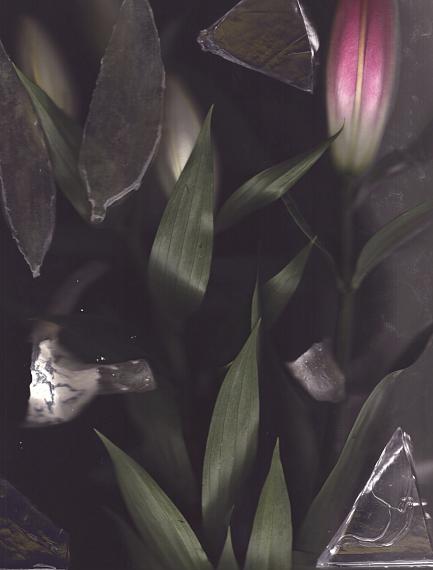
Lilium Radiantes, 2023
Multimedia installation
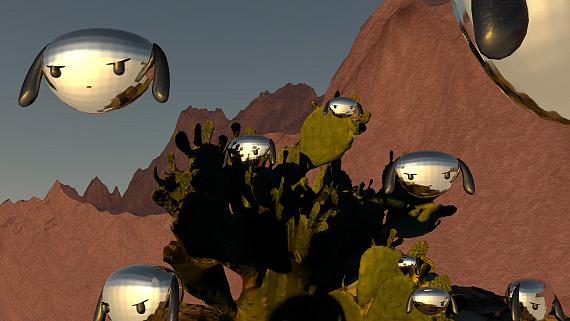
Bunny’s Big Adventure, 2023
Video, 3 min., 8 sec.